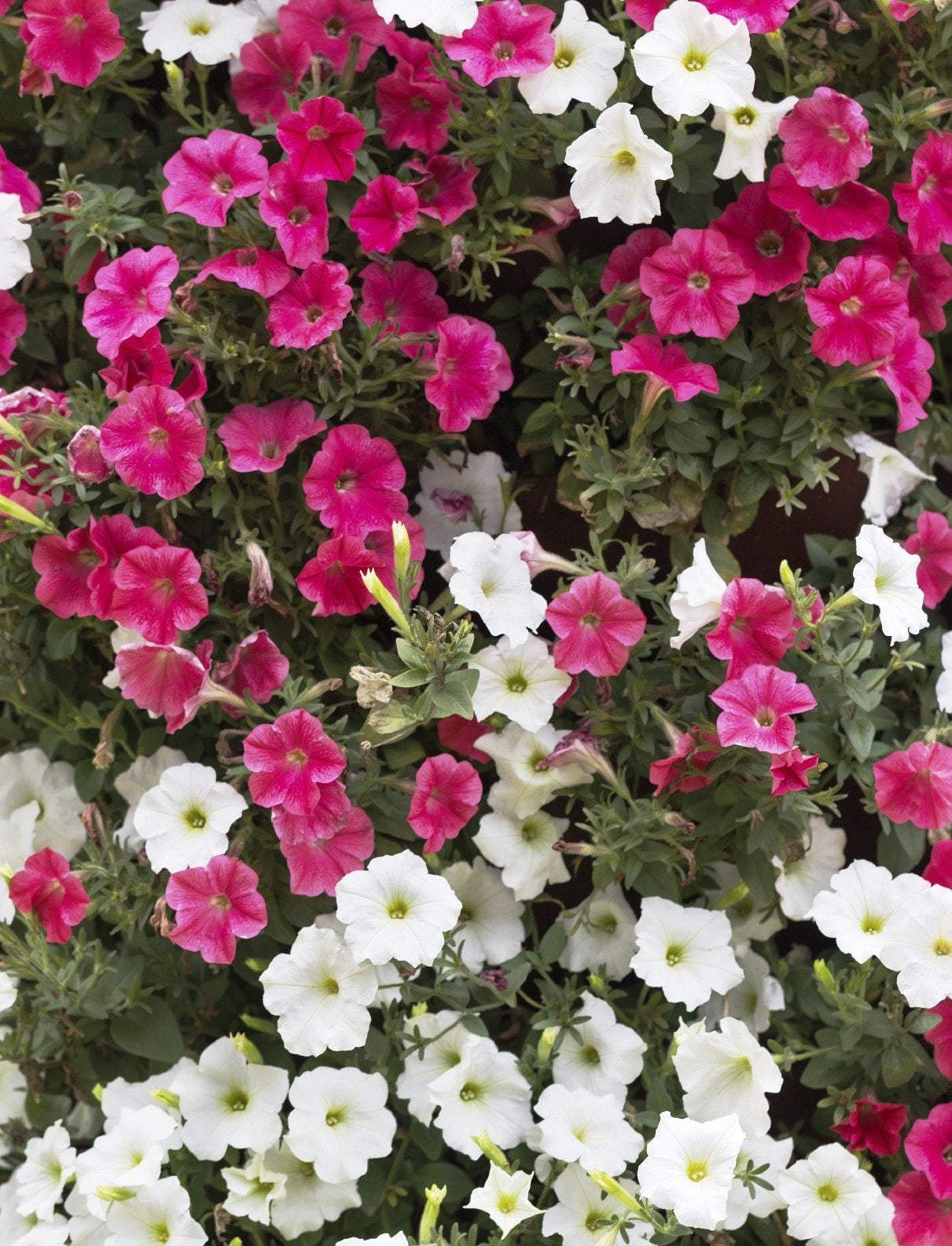Types Of Petunia Plants – What Are The Different Petunia Flowers


There’s a lot to appreciate about petunias, cheerful annuals that bloom dependably from early summer until the first frost in autumn. These cheery garden favorites are available in an amazing range of colors, sizes, and forms. Read on to learn about a few of the different types of petunias.
Types of Petunia Plants
There are four main types of petunia plants: Grandiflora, Multiflora, Milliflora, and Spreading (Wave). All four are readily available in series, which are groups of plants with uniform size and flowering habits. The only varying characteristic is the range of colors of different petunia flowers within each series.
Varieties of Petunias
The oldest types are Grandiflora petunias, which were developed in the 1950s. Grandiflora petunia varieties boast blooms measuring up to 5 inches (12.5 cm.) across on bouquet-shaped plants. Although the flowers are spectacular, they tend to get tired and spindly in midsummer. Grandiflora petunias perform best in moderate summers without excess humidity or moisture. Grandiflora petunias series include:
- Ultra
- Dream
- Storm
- Daddy
- Supermagic
- Supercascade
Multiflora petunias are smaller plants with more numerous but smaller blooms. The stems are strong, which makes multiflora petunia varieties suitable for windy climates. The blooms tend to hold up a bit longer than Grandiflora petunia varieties, especially during rainy weather. Multiflora petunias are available in both single and double varieties. Popular Multiflora petunias include:
- Primetime
- Celebrity
- Carpet
- Horizon
- Mirage
- Primetime
Milliflora petunia varieties produce masses of 1- to 1 ½-inch (2.5-4 cm.) blooms on miniature plants. The mature size of the plants is generally about 8 inches (20.5 cm.) tall and wide. Milliflora petunias bloom early and are often grown in containers or hanging baskets. They are low-maintenance plants that require no deadheading. Milliflora petunias include Picobella and Fantasy. Spreading, or Wave petunias, are a recent addition with blooms typically measuring about 2 inches (5 cm.) across. The plants, which typically spread 2 to 4 feet (0.5 to 1 m.) by the end of the season, look great in containers and work well as ground covers. They tolerate heat and drought fairly well and generally require no deadheading. Wave petunias include:
- Easy Wave
- Shock Wave
- Avalanche
Gardening tips, videos, info and more delivered right to your inbox!
Sign up for the Gardening Know How newsletter today and receive a free copy of our e-book "How to Grow Delicious Tomatoes".

A Credentialed Garden Writer, Mary H. Dyer was with Gardening Know How in the very beginning, publishing articles as early as 2007.
-
 Looking For Plants To Give You The Soft And Fuzzies? Try These 5 Fuzzy Leaf Plant Options
Looking For Plants To Give You The Soft And Fuzzies? Try These 5 Fuzzy Leaf Plant OptionsLovers of texture, drama, silver foliage and tactile plants will adore these special sensory garden additions. These fuzzy leaf plant options will leave you all aglow
By Susan Albert
-
 Get Ready For A Summer Of Hummers! Grow These Full Sun Hummingbird Plants and Flowers
Get Ready For A Summer Of Hummers! Grow These Full Sun Hummingbird Plants and FlowersIf you’re lucky enough to enjoy a sunny backyard, make sure you are maxing out on your pollinator opportunities and grow these full sun hummingbird plants and flowers
By Tonya Barnett